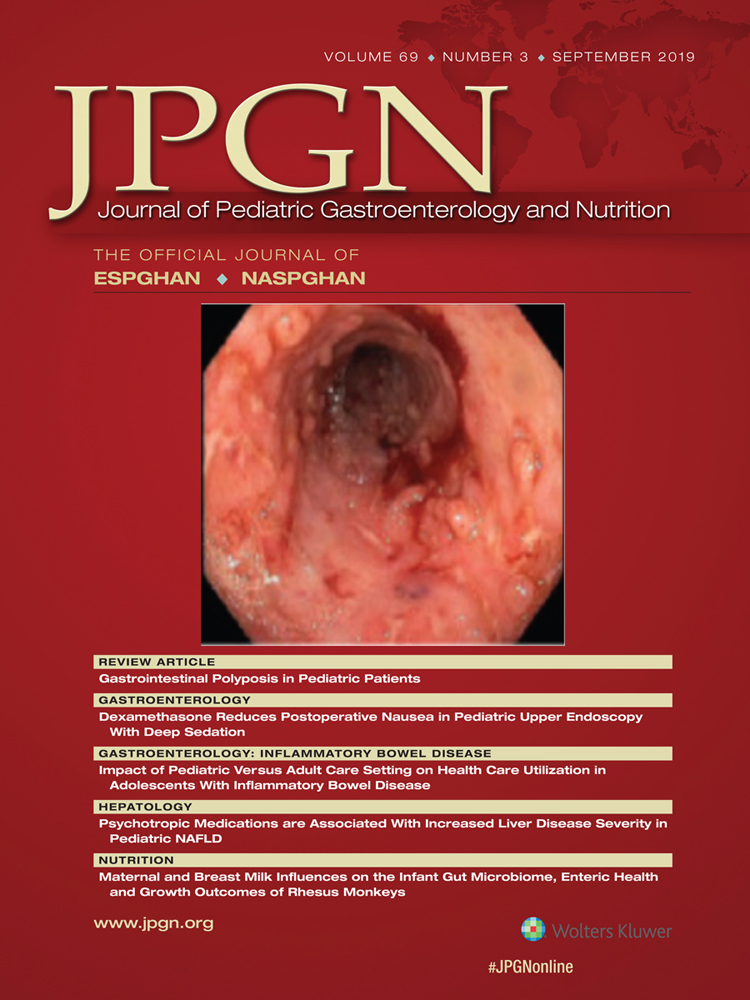Liver Ultrasound Patterns in Children With Cystic Fibrosis Correlate With Noninvasive Tests of Liver Disease
Supplemental digital content is available for this article. Direct URL citations appear in the printed text, and links to the digital files are provided in the HTML text of this article on the journal's Web site (www.jpgn.org).
This study was supported by the NIDDK (Grant Number U01 DK062456) and the Cystic Fibrosis Foundation (Grant Number NARKEW07A0).
S.C.L. receives research support from Bristol Myers Squibb and Abbvie. W.Y. reports no disclosures. D.H.L. receives research support from Bristol Myers Squibb, Gilead, Abbvie, and Roche. O.N. has no disclosures. A.W. reports no disclosures. W.K. receives research support from Gilead. A.J.F. ahs no disclosures. J.M. has no disclosures. M.R.N. consults for Vertex and has ownership and receives grants/contracts from Gilead and Abbvie.
ABSTRACT
Objectives:
Early identification of children with cystic fibrosis (CF) at risk for severe liver disease (CFLD) would enable targeted study of preventative therapies. There is no gold standard test for CFLD. Ultrasonography (US) is used to identify CFLD, but with concerns for its diagnostic accuracy. We aim to determine if differences in standard blood tests, imaging variables and noninvasive liver fibrosis indices correlate with liver US patterns, and thus provide supportive evidence that a heterogeneous US liver pattern reflects clinically relevant liver disease.
Methods:
We studied baseline research abdominal US and bloodwork from 244 children with pancreatic insufficient CF, ages 3 to 12 years, enrolled in a prospective study of the ability of US to predict CF cirrhosis (PUSH study). Children with a heterogeneous (HTG) liver pattern on US (n = 62) were matched 1 : 2 in design with children with normal US (NL, n = 122). Analyses included children with nodular (NOD, n = 22) and homogeneous hyperechoic (HMG, n = 38) livers.
Results:
Univariate analysis showed significant differences between US groups for standard blood tests, spleen size, and noninvasive liver fibrosis indices. Multivariable models discriminated NOD versus NL with excellent accuracy (AUROC 0.96). Models also distinguish HTG versus NL (AUROC 0.76), NOD versus HTG (0.78), and HMG versus NL (0.79).
Conclusions:
Liver US patterns in children with CF correlate with platelet count, spleen size and indices of liver fibrosis. Multivariable models of these biomarkers have excellent discriminating ability for NL versus NOD, and good ability to distinguish other US patterns, suggesting that US patterns correlate with clinically relevant liver disease.




